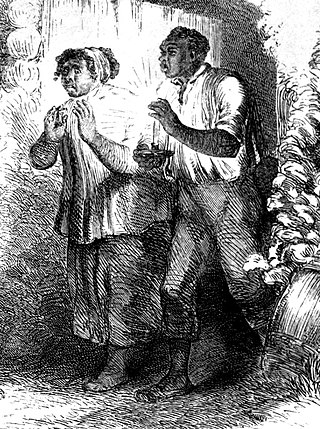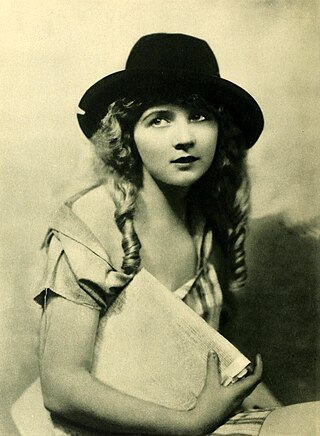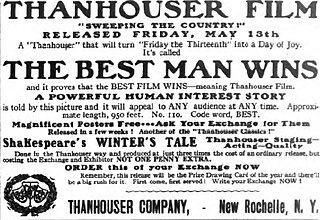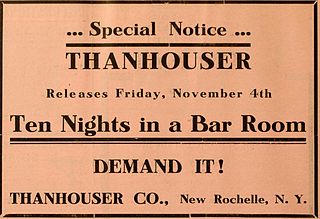
Uncle Tom is the title character of Harriet Beecher Stowe's 1852 novel Uncle Tom's Cabin. The character was seen by many readers as a ground-breaking humanistic portrayal of a slave, one who uses nonresistance and gives his life to protect others who have escaped from slavery. However, the character also came to be seen as inexplicably kind to white slaveholders, especially based on his portrayal in pro-compassion dramatizations. This led to the use of Uncle Tom – sometimes shortened to just a Tom – as a derogatory epithet for an exceedingly subservient person or house negro, particularly one aware of his or her own lower-class racial status.

Uncle Tom's Cabin; or, Life Among the Lowly is an anti-slavery novel by American author Harriet Beecher Stowe. Published in two volumes in 1852, the novel had a profound effect on attitudes toward African Americans and slavery in the U.S., and is said to have "helped lay the groundwork for the [American] Civil War".

Harriet Elisabeth Beecher Stowe was an American author and abolitionist. She came from the religious Beecher family and wrote the popular novel Uncle Tom's Cabin (1852), which depicts the harsh conditions experienced by enslaved African Americans. The book reached an audience of millions as a novel and play, and became influential in the United States and in Great Britain, energizing anti-slavery forces in the American North, while provoking widespread anger in the South. Stowe wrote 30 books, including novels, three travel memoirs, and collections of articles and letters. She was influential both for her writings as well as for her public stances and debates on social issues of the day.

Dred: A Tale of the Great Dismal Swamp is the second popular novel from American author Harriet Beecher Stowe. It was first published in two volumes by Phillips, Sampson and Company in 1856. Although it enjoyed better initial sales than her previous, and more famous, novel Uncle Tom's Cabin, it was ultimately less popular. Dred was of a more documentary nature whereas Uncle Tom's Cabin had much stronger characters.

A Key to Uncle Tom's Cabin is a book by American author Harriet Beecher Stowe. It was published to document the veracity of the depiction of slavery in Stowe's anti-slavery novel Uncle Tom's Cabin (1852). First published in 1853 by Jewett, Proctor & Worthington, the book also provides insights into Stowe's own views on slavery.

Onkel Toms Hütte is a Berlin U-Bahn station located in the Zehlendorf district. Since 12 December 2004 it is served by the U3 line.

Tom show is a general term for any play or musical based on the 1852 novel Uncle Tom's Cabin by Harriet Beecher Stowe. The novel attempts to depict the harsh reality of slavery. Due to the weak copyright laws at the time, a number of unauthorized plays based on the novel were staged for decades, many of them mocking the novel's social message, and leading to the pejorative term "Uncle Tom".

A number of film adaptations of Harriet Beecher Stowe's 1852 novel Uncle Tom's Cabin have been made over the years. Most of these movies were created during the silent film era. Since the 1930s, Hollywood studios have considered the story too controversial for another adaptation. Characters, themes and plot elements from Uncle Tom's Cabin have also influenced a large number of other movies, including The Birth of a Nation (1915), while also inspiring numerous animated cartoons.

The Harriet Beecher Stowe House is a historic home and National Historic Landmark at 63 Federal Street in Brunswick, Maine, notable as a short-term home of Harriet Beecher Stowe and Calvin Ellis Stowe and where Harriet wrote her 1852 novel Uncle Tom's Cabin. Earlier, it had been the home of Henry Wadsworth Longfellow as a student. It is today owned by Bowdoin College. A space within the house, called Harriet's Writing Room, is open to the public.
Life at the South; or, "Uncle Tom's Cabin" As It Is is an 1852 plantation fiction novel written by William L.G. Smith.

Uncle Tom's Cabin is a 1927 American synchronized sound drama film directed by Harry A. Pollard and released by Universal Pictures. While the film has no audible dialog, it was released with a synchronized musical score with sound effects using the Western Electric sound-on-film process. The film is based on the 1852 novel Uncle Tom's Cabin by Harriet Beecher Stowe and was the last silent version filmed.

Gladys Leslie Moore was an American actress in silent film, active in the 1910s and 1920s. Though less-remembered than superstars like Mary Pickford, she had a number of starring roles from 1917 to the early 1920s and was one of the young female stars of her day.

Uncle Tom's Cabin was a 1918 American silent drama film directed by J. Searle Dawley, produced by Famous Players–Lasky Corporation and distributed by Paramount Pictures under the Famous Players–Lasky name. The film is based on Harriet Beecher Stowe's 1852 novel Uncle Tom's Cabin and George Aiken's eponymous play.

Uncle Tom's Cabin is a 1914 American silent historical drama film directed by William Robert Daly using Vitagraph and starring Sam Lucas, Walter Hitchcock, and Hattie Delaro. It was based upon playwright George L. Aiken's theatrical adaptation of Harriet Beecher Stowe's 1852 novel Uncle Tom's Cabin. It was produced at Fort Lee, New Jersey by the newly founded World Film studio. The film is historically notable for being the first movie with a black actor playing a leading role.

Topsy and Eva is a 1927 American drama silent film directed by Del Lord and written by Catherine Chisholm Cushing, Scott Darling, Dudley Early and Lois Weber. D. W. Griffith also directed additional scenes. It is based on the two key female figures in Harriet Beecher Stowe's 1852 classic novel Uncle Tom's Cabin.

The Best Man Wins is a 1910 American silent short drama produced by the Thanhouser Company. The film features Thanhouser's leading players Anna Rosemond, Martin Faust, Frank H. Crane and Marie Eline in a drama about morality. Two suitors are vying for the hand of Julia Seaton and propose to her on the same day, but she asks for a month to decide between them. In the time, the caliber of both men are tested when asked by a young girl, named May, to help her dying mother. The doctor refuses to help, and the lawyer offers his assistance, but her mother soon dies. The orphan is taken in by the Seaton family and personally attests to the character of both men when Julia Seaton has to choose between her suitors.

Uncle Tom's Cabin is a 1910 American silent short drama produced by the Thanhouser Company. The film was adapted by from the 1852 novel Uncle Tom's Cabin by Harriet Beecher Stowe. The plot of the Thanhouser production streamlined the actual story to portray the film over the course of a single reel. The film was released on July 26, 1910, on the same day that Vitagraph released the first reel of their own three reel version of Uncle Tom's Cabin. This prompted the Thanhouser Company to advertise against the Vitagraph film by referring to the other as being overly drawn out. The film garnered mixed, but mostly positive reception in trade publications. The film is presumed lost.

Ten Nights in a Bar Room is a 1910 American silent short drama produced by the Thanhouser Company. Adapted from the novel Ten Nights in a Bar-Room and What I Saw There by Timothy Shay Arthur, the production focuses on Joe Morgan after he has become a hopeless drunkard. Often Morgan's young daughter, Mary, comes to beg her father to return home. One day, she appears during a fight between the two men and is fatally struck by a bottle thrown by the saloon-keeper. Before Mary dies she asks her father to promise to swear off alcohol and he accepts. He is reformed and becomes successful, while the saloon-keeper is killed in a fight in an irony of fate. The film was released on November 4, 1910 and met with mixed reviews. The film is presumed lost.
Uncle Tom's Cabin is a 1987 American made-for-television drama film directed by Stan Lathan and starring Avery Brooks, Bruce Dern, Phylicia Rashad, and Edward Woodward. It is based on the 1852 novel of the same name by Harriet Beecher Stowe.

Uncle Tom's Cabin is a 1910 American silent short drama produced by Vitagraph Studios. The film was adapted by from the 1852 novel Uncle Tom's Cabin by Harriet Beecher Stowe. The first reel was released on July 26, 1910, the same day that the Thanhouser Company released their own three-reel version of Uncle Tom's Cabin. This prompted the Thanhouser Company to advertise against the Vitagraph film by referring to the other as being overly drawn out.
















